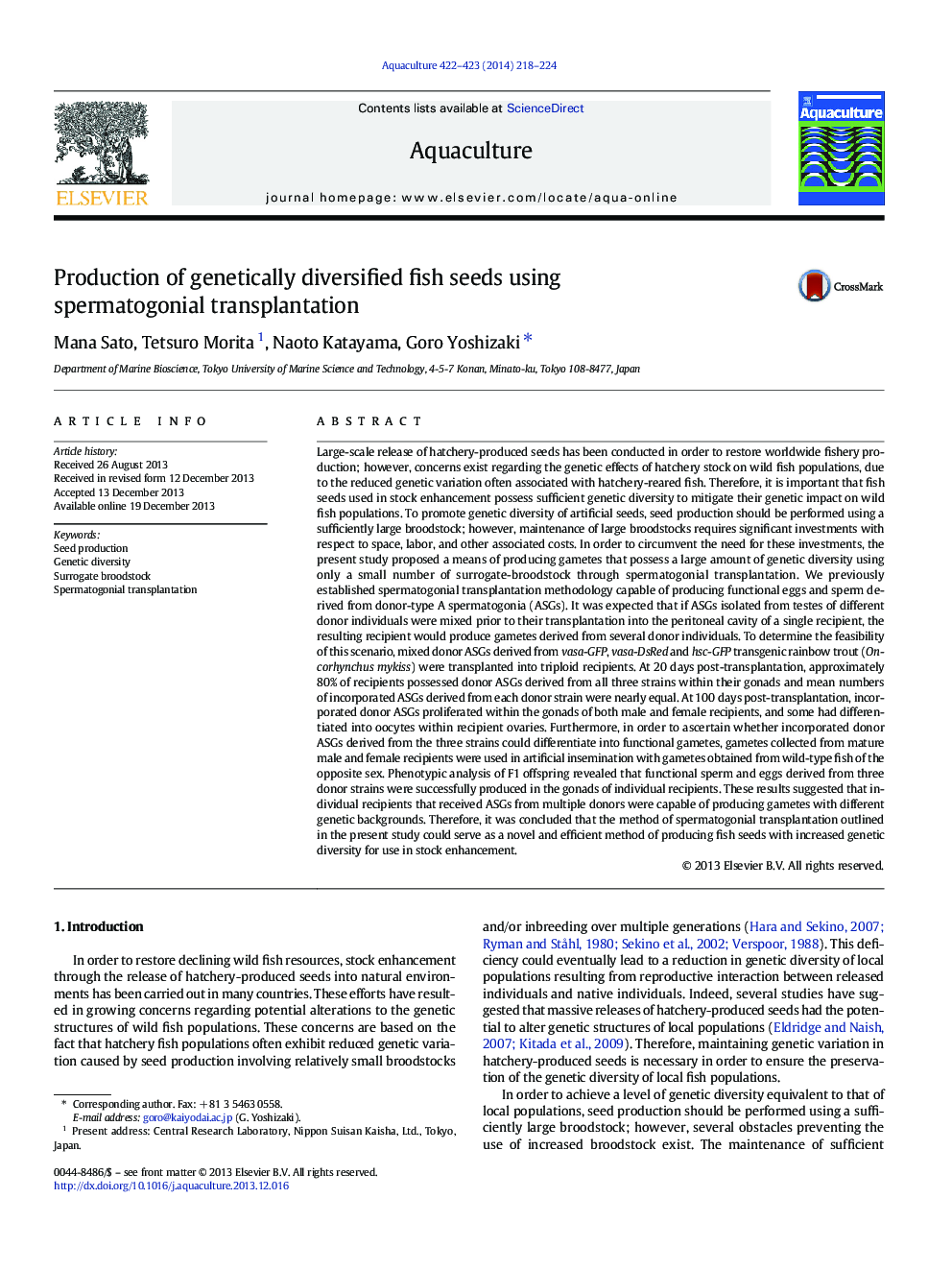| Article ID | Journal | Published Year | Pages | File Type |
|---|---|---|---|---|
| 2421950 | Aquaculture | 2014 | 7 Pages |
•Mixed germ-cells from 3 donor strains were transplanted into sterile recipients.•A single recipient could incorporate ASGs from 3 donor strains into the gonad.•Females produced eggs from all donor strains at least in the first spawning season.•Males produced milt from all donor strains across at least two spawning seasons.
Large-scale release of hatchery-produced seeds has been conducted in order to restore worldwide fishery production; however, concerns exist regarding the genetic effects of hatchery stock on wild fish populations, due to the reduced genetic variation often associated with hatchery-reared fish. Therefore, it is important that fish seeds used in stock enhancement possess sufficient genetic diversity to mitigate their genetic impact on wild fish populations. To promote genetic diversity of artificial seeds, seed production should be performed using a sufficiently large broodstock; however, maintenance of large broodstocks requires significant investments with respect to space, labor, and other associated costs. In order to circumvent the need for these investments, the present study proposed a means of producing gametes that possess a large amount of genetic diversity using only a small number of surrogate-broodstock through spermatogonial transplantation. We previously established spermatogonial transplantation methodology capable of producing functional eggs and sperm derived from donor-type A spermatogonia (ASGs). It was expected that if ASGs isolated from testes of different donor individuals were mixed prior to their transplantation into the peritoneal cavity of a single recipient, the resulting recipient would produce gametes derived from several donor individuals. To determine the feasibility of this scenario, mixed donor ASGs derived from vasa-GFP, vasa-DsRed and hsc-GFP transgenic rainbow trout (Oncorhynchus mykiss) were transplanted into triploid recipients. At 20 days post-transplantation, approximately 80% of recipients possessed donor ASGs derived from all three strains within their gonads and mean numbers of incorporated ASGs derived from each donor strain were nearly equal. At 100 days post-transplantation, incorporated donor ASGs proliferated within the gonads of both male and female recipients, and some had differentiated into oocytes within recipient ovaries. Furthermore, in order to ascertain whether incorporated donor ASGs derived from the three strains could differentiate into functional gametes, gametes collected from mature male and female recipients were used in artificial insemination with gametes obtained from wild-type fish of the opposite sex. Phenotypic analysis of F1 offspring revealed that functional sperm and eggs derived from three donor strains were successfully produced in the gonads of individual recipients. These results suggested that individual recipients that received ASGs from multiple donors were capable of producing gametes with different genetic backgrounds. Therefore, it was concluded that the method of spermatogonial transplantation outlined in the present study could serve as a novel and efficient method of producing fish seeds with increased genetic diversity for use in stock enhancement.
